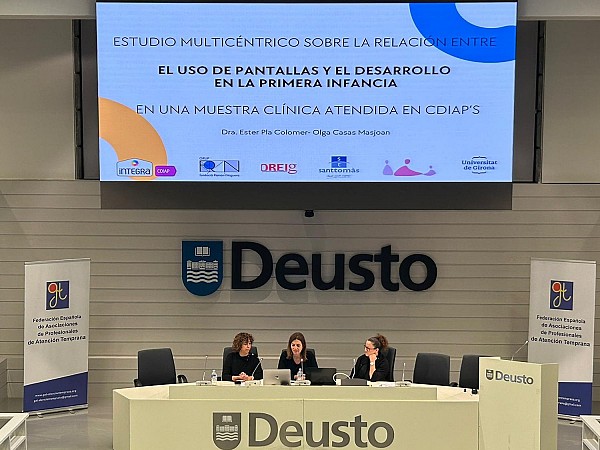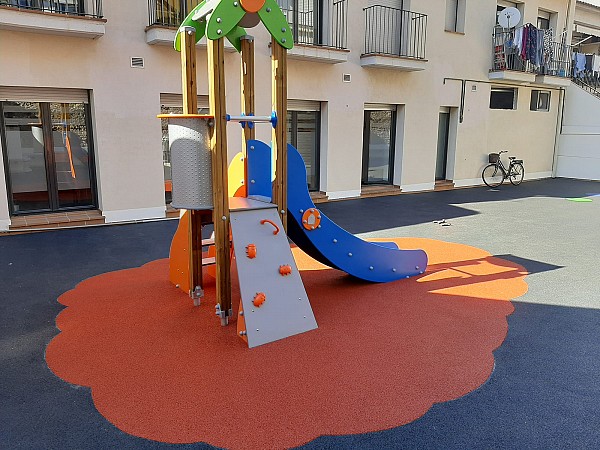Author: Anna Girbent, physiotherapist of the CDIAP. Article published in FRN Magazine 2017.
The CDIAP physiotherapists have the great luck to be able to combine the work we do in the psychomotor classroom with what we do in the aquatic environment since, both the CDIAP of Salt and the Girona, they have a swimming pool. The size of the pool allows two adults and one child to fit. The water temperature is pleasant, so the child comfortably tolerates a session of about 30 or 45 minutes, depending on the age and resistance of the child.
Hydrotherapy is a therapeutic activity that favors psychomotor development through the action of water. We take advantage of the physical properties of water (temperature, resistance, relief) to help us achieve the therapeutic goals that we set for each child, together with their parents.
For most people, being submerged in the water is usually a pleasant experience. However, in order for the child to have a good adaptation, it is essential to present this new method in a prudent and progressive way, so that he feels safe.
When we start working with a child in the pool, we hold it between our arms, or in contact with our body. As we see it more confident, we can separate it from us more. We can also help you with support elements such as churros and visual and auditory stimuli with floating objects in the water.
The position of our hands will give information to the child, which will strengthen the body's reactions. We want to achieve and improve the postural control of the head and the trunk by balancing the child in all directions so that it has to balance the position of his body. At the beginning we hold the infant with our hands from under their armpits, but as their postural control is improving, our support will be lowered, to further imply muscles of the trunk, pelvis and lower limbs . We can also move the upper and lower extremities of the child into the water so that they have to stabilize them and thus improve the strength and proximal control of them.
We think that any child could benefit from work in the pool, but above all there are cases where, for us, the aquatic environment is a great ally. For example, children who have poor tolerance to be tummy down on the floor, inside the water usually accept this position better; Children who have significant movement difficulties, within the water have more freedom and ease of movement; Children who have little attention and significant dispersion in the psychomotor classroom, in the water seek our help to feel safe; Children who are starting to get their rights and now touch their feet on the floor, within the pool, they stimulate walking and improve their balance. Also, when the good weather arrives, and families go to the pool or on the beach with their children, we take advantage of them to give you guidelines on how well the child can be in the water, so that they can continue Working outside the CDIAP the proposed therapeutic objectives. We attach great importance to being able to give families strategies throughout all the attention children receive at the CDIAP.
More and more, we talk about the importance of prenatal life, birth and first years of life. Touching, hugging and talking to our babies will improve the psychomotor development and growth. In the aquatic environment, through skin-to-skin contact, we can dedicate the child to a time of exclusivity. The emotional bond will be encouraged and we will be able to convey their confidence and security, to reach an understanding that will accompany us all our lives. That is why we want to encourage all parents and professionals to put into practice this beautiful experience!
Article published in the Annual Magazine of the Ramon Noguera Foundation 2017. Read more articles: MAGAZINE FRN 2017
If you want to support projects such as this, do it FRIENDS OF THE FOUNDATION

